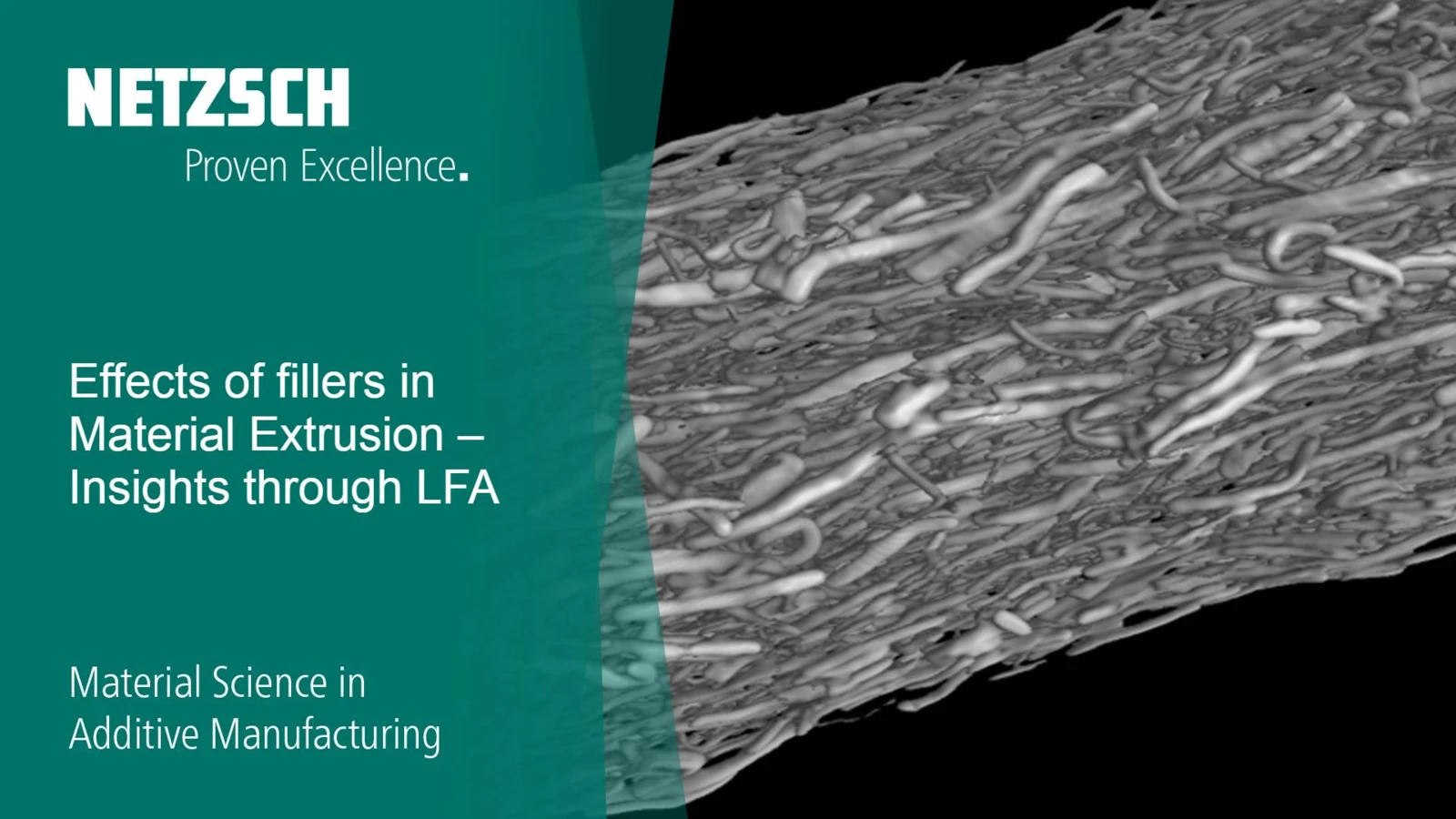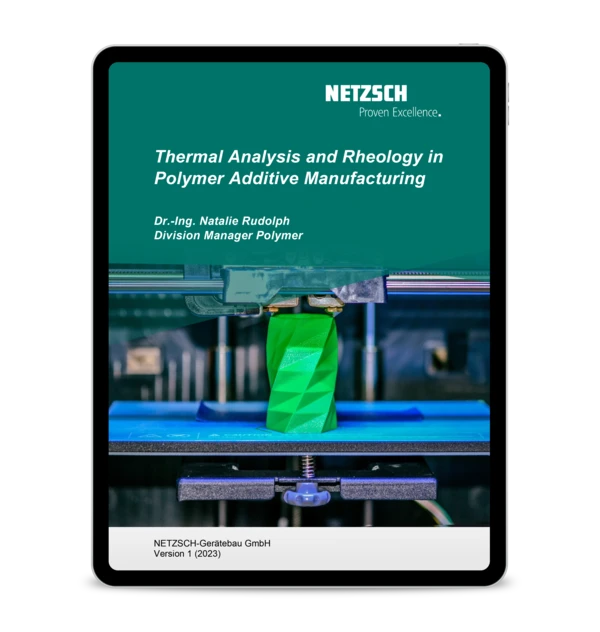
31.01.2022 by Aileen Sammler, Dr. Natalie Rudolph
Material Science in Additive Manufacturing: Effects of fillers in Material Extrusion – Insights through Laser Flash Analysis
In the last episode, we ended with an explanation of the effect of fillers on rheology and processing. Today, we will talk about the effects such fillers can have on the part properties as well as processing using Laser Flash Analysis (LFA).
In the last episode, we ended with an explanation of the effect of fillers on rheology and processing. Today, we will talk about the effects such fillers can have on the part properties as well as processing using Laser Flash Analysis (LFA).
This week’s topic:
It is quite important to understand the effect of fillers on your material properties, because they affect processing and part properties. How fast is the material melting? How do the fillers align in the print nozzle or the printed part? How can that affect the Thermal ConductivityThermal conductivity (λ with the unit W/(m•K)) describes the transport of energy – in the form of heat – through a body of mass as the result of a temperature gradient (see fig. 1). According to the second law of thermodynamics, heat always flows in the direction of the lower temperature.thermal conductivity of my part? Let´s find out using NETZSCH Laser Flash Analysis (LFA).
Learn about:
- How fillers are aligned in the filament, in the nozzle and during the print
- Effects of filament diameter on alignment
- How to prepare and measure filled material extrusion samples using LFA
- Why determination of Thermal DiffusivityThermal diffusivity (a with the unit mm2/s) is a material-specific property for characterizing unsteady heat conduction. This value describes how quickly a material reacts to a change in temperature.thermal diffusivity is highly relevant for print orientation and design features

FREE E-Book
Thermal Analysis and Rheology in Polymer Additive Manufacturing
Discover the secrets behind AM's game-changing capabilities! Our newly released ebook delves deep into the heart of AM, unveiling the power of reliable material characterization techniques, specifically thermal analysis and rheology.
More Additive Manufacturing Applications by NETZSCH
Missed our last episode? Just click here!
Learn more about Additive Manufacturing by watching our series on YouTube: #ambynetzsch – YouTube
In our next video, we are going to talk about different analysis methods used for UV-curable thermosets.